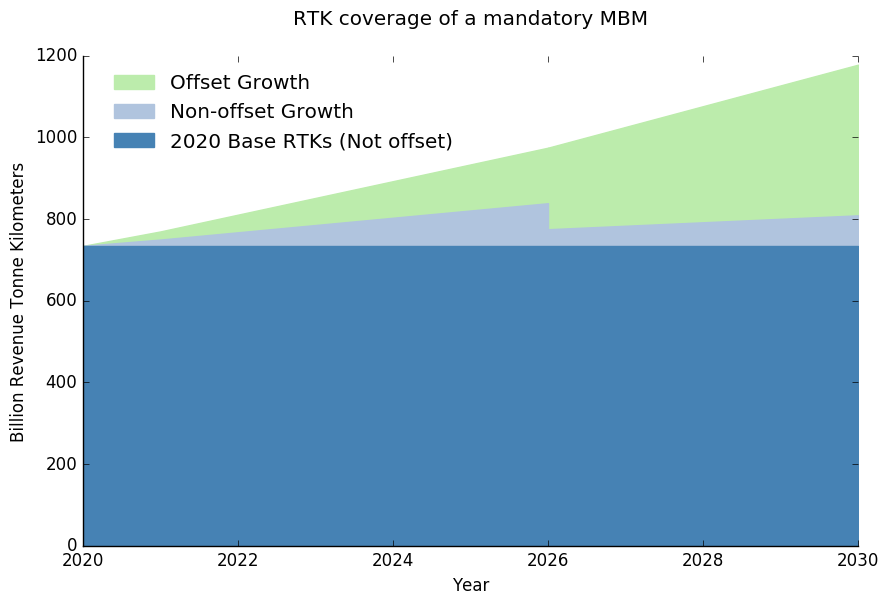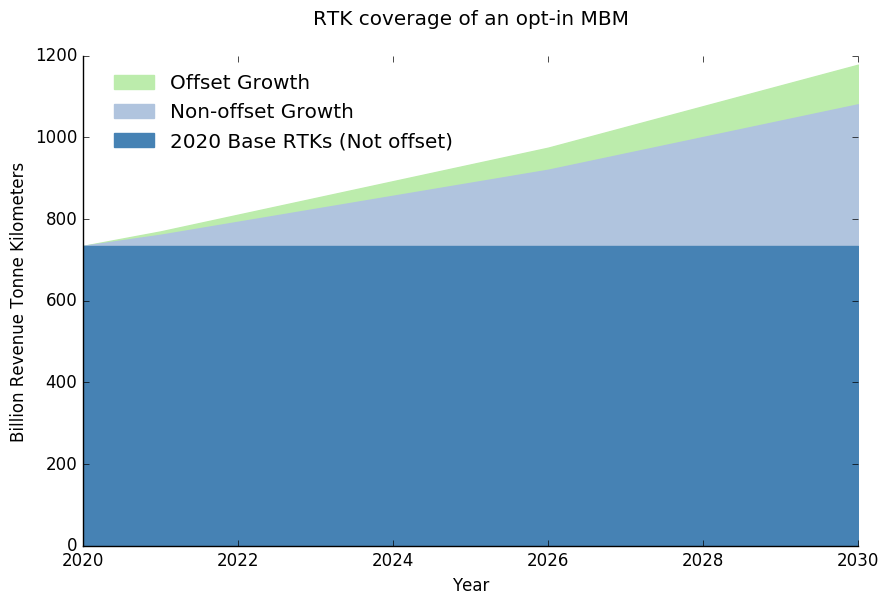Blog
Is carbon neutral growth on the horizon for aviation? That depends on your definition
In October 2013, the International Civil Aviation Organization (ICAO), the specialized UN agency that acts as the de facto regulator for aviation worldwide, established an aspirational climate goal of Carbon Neutral Growth (CNG) for the aviation sector from 2020 on. Since then, various working groups in ICAO have been meeting regularly to flesh out an industry proposal to promote carbon offsets through a global market-based measure (MBM) for decision at the ICAO’s 39th Assembly next month.
Questions about the likely effectiveness of ICAO’s MBM are many. Here we focus narrowly on the potential coverage of the MBM, and how consistent these various approaches are with ICAO’s CNG goal. There is general agreement that the smallest and least developed countries, which have contributed little to historical emissions, should be exempted from the scheme. But those exemptions, if not made up by extra offsetting for the carriers that are included, would mean that the MBM would allow emissions growth beyond 2020. The question is how much.
There have been many iterations of ICAO’s offsetting system along the way. A recent draft Assembly resolution proposed to implement the MBM in two phases. In Phase 1, states accounting for at least 1% individually or within the top 80% of aggregate international 2018 aviation activity in the form of revenue tonne kilometers (RTKs) must offset post-2020 emissions growth. Phase 2 would tighten the exclusion criteria via percent thresholds of 0.5% on an individual basis or 95% on an aggregate basis. Most recently, a news report indicated that the system may rely upon countries voluntarily “opting-in,” with countries like the US, Canada, Mexico, Singapore, and the 44 European members of the ECAC as likely participants. India, on the other hand, has expressed hostility toward to any system covering its airlines.
So how do the current proposals stack up in terms of coverage? To figure this out, we estimated the coverage of several MBM systems based upon different threshold percentages (e.g., 1% and 80%) as well as any opt-in or opt-out countries (e.g., India). Key inputs included OAG Schedules data from 2016, growth rates from ICAO’s 2013 Environmental Report and global average load factors from ICAO’s Annual Report.
Several graphs depicting the estimated coverage of potential MBM approaches are shown below. The first graph shows the coverage of the current draft Assembly resolution, with excluded international aviation activity (2020 RTKs) shown in dark blue, post-2020 growth requiring offsetting shown in green, and growth not subject to offsetting shown in light blue. Surprisingly, what looks like near complete coverage on paper (~80% in Phase 1, and ~95% in Phase 2), ends up allowing for emissions growth that is not insignificant. Between 2020 and 2030, about 76% of growth, or 17% of total international RTKs, is covered in the base case scenario. This leaves behind about 8.6 trillion RTKs that would not be subject to carbon offsetting.

Why does a proposal that looks like 80% coverage on paper for the first five years end up covering only 56% of international activity? Two issues are at work, both related to ICAO’s definition of a country’s “individual share of international aviation activities.” ICAO’s approach is to define activity as the RTKs flown by air carriers registered to a given country via an air operator’s certificate (AOC). If a foreign registered carrier provides most of the international flights to and from a country, this can make a decent sized market, like Brazil or South Africa, look small (and therefore exempt). However, once the list of exempt countries is determined, ICAO would exclude flights from all carriers flying to and from that country regardless of where there are registered. This makes sense to prevent airlines that do not need to pay for carbon offsets from having an unfair price advantage over included airlines, but has the side effect of allowing more emissions growth.
A second, and larger, effect occurs if the calculation of which countries would be exempt from the MBM and which flights would then be excluded are not properly aligned. The draft resolution’s approach is generally understood to determine whether a country is exempt based upon its percentage share of global RTKs by departures only, or an equivalent value. The current proposal, however, excludes all flights to and from an exempt country, approximately doubling the coverage gap of the MBM. These two ways of defining aviation activity, combined, explain why what looks like 80% coverage on paper in fact leaves a 44% coverage gap through 2026.
Unfortunately, the numbers look even worse for an opt-in system focused on richer countries. The chart below shows our analysis of that system. When only the 48 countries identified in the article above are included under the MBM, the coverage falls significantly; by 2030, less than 22% of growth RTKs, or 8% of international RTKs, would be covered by the measure.

These estimates are subject to significant uncertainty, but clearly even the mandatory approach under consideration today would fall short of the CNG2020 goal. What could ICAO do to plug this gap? A number of solutions have been proposed. ICAO could base its exemption calculation upon all flights to and from a country regardless of where a carrier is registered, as recommended by industry. It could also tighten the exclusion criteria for a mandatory MBM, either by reducing the RTK numerical threshold or by aligning the method of exempting countries and excluding flights. Finally, the system could be designed so that uncovered emissions growth due to country exemptions is offset by carriers participating in the scheme, an idea advocated by environmental NGOs, but opposed by industry.
ICAO has struggled to develop an MBM for international aviation for the past 15 years. We’ll know soon whether it succeeds this time and, if so, how close to its goal of carbon neutral growth it comes.
